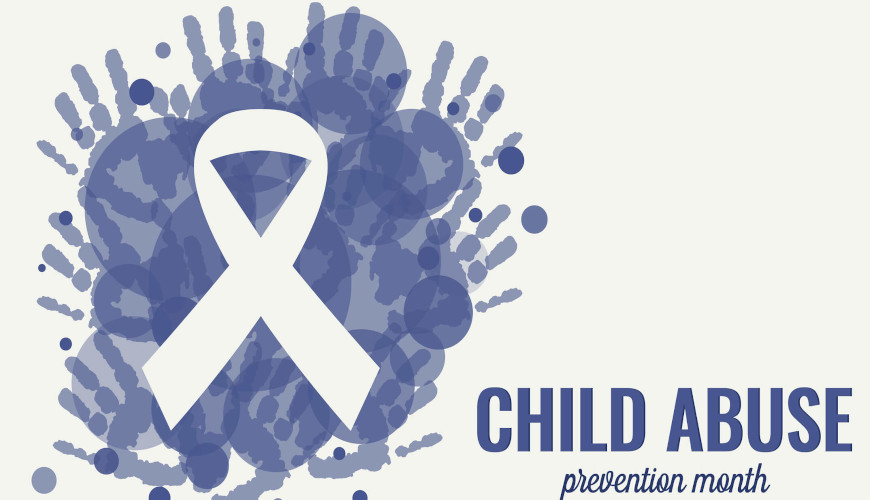Supporting Children who are Abused

April is Child Abuse Prevention Month in America. Sadly, nearly 700,000 children are abused in the US each year. Studies also show that 60-70% of homes where a woman is abused by her partner, the children are abused as well. And children who were exposed to violence in the home are 15 times more likely to be physically and/or sexually assaulted than the national average. Therefore, children who have witnessed domestic violence are more vulnerable of being abused themselves. Child abuse includes verbal, emotional, physical, and sexual abuse. In homes where domestic violence is occurring, emotional abuse towards children is very recurrent.
Witnessing their mother be abused is considered emotional abuse of a child, and can cause the same trauma symptoms as other forms of abuse. Common forms of emotional abuse perpetrated by an abusive partner in the home includes using the children as weapons, blaming the child for the abuse, breaking important promises, ignoring the child for long periods of time, yelling and insulting the child, demanding the child’s obedience through intimidation and fear, and treating the child as a servant.
Because child abuse can happen in any home and in any zip code, it is important to recognize the red flags of abuse. Every child is different; and therefore, not all abused children will exhibit the same red flags. If children have one or two red flags on this list, it does not mean they are for sure being abused. But we want to be alert and watch for other red flags or indicators that a child might be experiencing abuse.
Red flags of Child Abuse
- Low self-esteem (making statements such as “I’m stupid” or “no one loves me”)
- Depression or Anxiety
- Isolation or seems emotionally distant from others
- Physical aggression
- Nightmares and sleeping problems
- Bed wetting
- Acts older or younger than their age
- Sudden change in appetite
- Rapid changes in demeanor
- Demonstrates sexualized play or behaviors
- Poor body hygiene
- Suicidal thoughts or attempts
The effects of child abuse can be seen in a child’s social behaviors such as difficulty trusting others or volatile relationships. It can also show up as risk-taking behaviors like drugs, alcohol, and self-harm. Some children who have been abused even receive a misdiagnosis because their trauma symptoms of anger, fear, hyperactivity, inattention, poor school performance, and difficulty managing their emotions look like mental health concerns. The good news is that there is hope and healing. With the help of safe adults, children can heal from abuse. The effects of abuse do not have to be long-lasting.
If you notice that your child or a child you know might be experiencing abuse, what can you do? First, in Texas, everyone is considered a mandated reporter if you suspect physical or sexual child abuse. If you aren’t sure what constitutes a CPS report, you can find that information on their website. But besides calling CPS, there are steps you can do to help the child heal.
Whether you are the child’s parent, family member, friend, or teacher, reach out to the child and let them know you care about them. If the child discloses abuse to you, your job is to believe them and reassure them that you want to help them find safety. Even if the perpetrator is someone you love, it is more important to believe the child rather than investigate the situation by interrogating the child or perpetrator. Let the authorities investigate. The most healing thing for the child is to hear that it’s not their fault, that they are brave to tell you what happened to them, and that you believe them. To the best of your ability, look for ways to stop the child from having contact with the perpetrator. If your child does not feel comfortable being around someone, don’t force it (unless there is a court-order that demands it). Create a safety plan with the child by discussing potential future contact and possible backlash when the abuser learns of the disclosure. Seek professional help from a counselor who has experience working with children who have been abused. Finding a counselor for your child will let the child know that they are important to you and that you care about their well-being.
Finally, there are ideas parents can implement to help prevent and minimize the risk of child abuse. Be aware of who your child hangs out with and get to know any adults in their life, including camp counselors, church leaders, and school tutors. Setting up rules that your family does not keep secrets, will send the message that you value open communication. This will let potential perpetrators know that your child will tell you if any boundaries are crossed. For holidays and birthdays, focus on having surprises about gifts, rather than calling it a secret. Another helpful parenting tip is to teach your children about safe touch and unsafe touch. Using the correct names of body parts, especially with young children, will also deter child abusers. There are many books and online resources to help you navigate these topics with children of all ages. In conclusion, one of the best protective factors for children is having a loving and healthy relationship with a parent. Spend time playing together and let the child lead playtime. Whether you’re playing with blocks, throwing a ball, having a dance party, or walking around the park, creating positive interactions with laughter and fun will be healing for any child.
By Ruth Guerreiro, LCSW, Sr. Director of Clinical and Non-Residential Services
